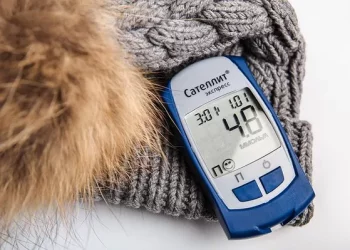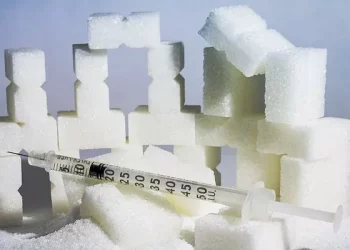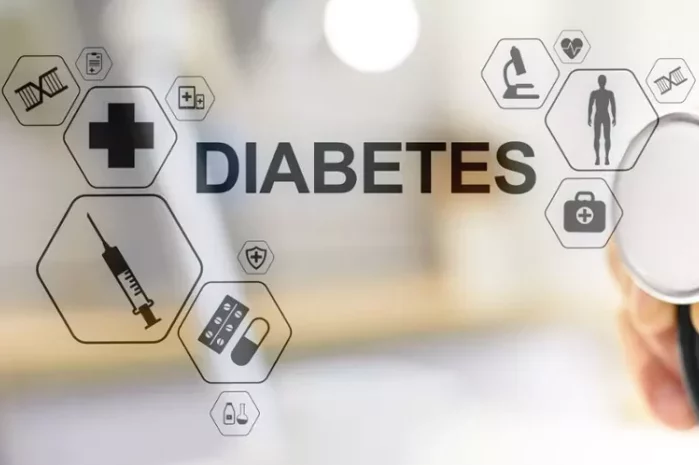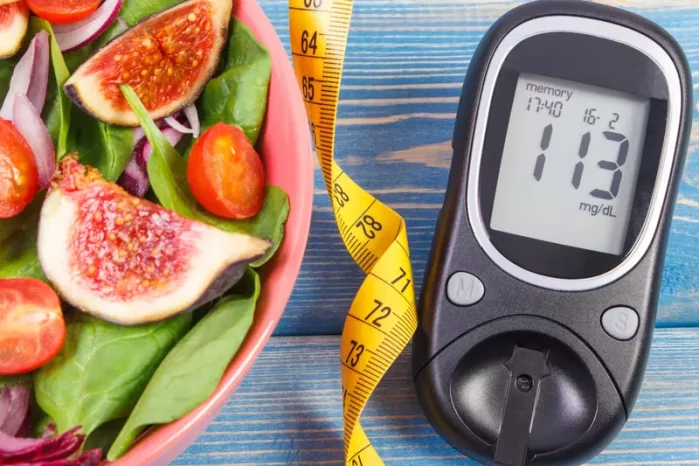Low blood sugar, or hypoglycemia, is a condition that occurs when the glucose levels in the bloodstream fall below normal levels. It can affect anyone but is especially common among individuals with diabetes who take insulin or other medications to lower blood sugar. Hypoglycemia can occur suddenly and may lead to symptoms like dizziness, weakness, confusion, and irritability, and if not addressed quickly, it can result in more severe health consequences. This article will guide you on what to eat or drink when blood sugar is low to manage the condition effectively and prevent further complications.
Understanding Low Blood Sugar (Hypoglycemia)
Hypoglycemia occurs when your blood glucose level drops too low, typically under 70 mg/dL (3.9 mmol/L). For people with diabetes, low blood sugar often happens when there is an imbalance between insulin or other medication, food intake, and physical activity. However, hypoglycemia can also happen in people without diabetes, especially in those with certain medical conditions, or as a result of alcohol consumption, prolonged fasting, or excessive physical activity.
The symptoms of low blood sugar vary from person to person but commonly include:
-
Shakiness or trembling
-
Sweating
-
Dizziness or lightheadedness
-
Hunger
-
Irritability or mood swings
-
Confusion
-
Weakness or fatigue
If hypoglycemia is left untreated, it can lead to more severe complications such as loss of consciousness, seizures, or even coma. Therefore, recognizing the signs of low blood sugar and taking prompt action is critical.
What to Eat and Drink When Blood Sugar is Low: The Fast-Acting Foods
When you experience a sudden drop in blood sugar, it’s important to act quickly to prevent further complications. The key to managing hypoglycemia is to consume fast-acting carbohydrates that are easily absorbed by the body. These carbohydrates can quickly raise blood glucose levels.
The general rule for treating hypoglycemia is the “15-15 Rule.” This involves consuming 15 grams of fast-acting carbohydrates, waiting for 15 minutes, and then re-checking your blood sugar. If your blood sugar is still low, you should repeat the process.
Fast-Acting Carbohydrates to Raise Low Blood Sugar
Here are some common foods and drinks that contain fast-acting carbohydrates, which can help raise blood sugar levels quickly:
Glucose Tablets or Gel: These are the most effective and recommended treatment for low blood sugar. Glucose tablets come in a controlled dose, typically providing about 15 grams of glucose per tablet or gel packet. They are available in most drug stores and pharmacies.
Fruit Juice: A small glass (about 4 ounces) of fruit juice, such as orange juice, apple juice, or grape juice, provides a quick source of carbohydrates. Be sure to choose juices without added sugars, as they can increase the glycemic index of the drink. Fruit juice should be consumed in moderation to avoid overshooting blood sugar levels.
Regular Soda: A can of regular soda (about 4 ounces) can quickly raise your blood sugar levels due to its high sugar content. Avoid diet sodas, as they contain artificial sweeteners that do not affect blood glucose levels.
Candy or Hard Candies: Simple sugars such as those found in hard candies (e.g., Lifesavers) or jelly beans can be effective in raising blood sugar quickly. However, avoid sugar-free candies as they do not provide the necessary glucose.
Honey or Syrup: A tablespoon of honey or maple syrup can also be an effective treatment for low blood sugar. These sweeteners are made from simple sugars that the body can absorb quickly to raise glucose levels.
Raisins or Dried Fruit: A small serving of raisins or dried fruit (about 1/4 cup) is another option for quickly raising blood sugar. These are portable and convenient but contain concentrated sugars, so be mindful of portion sizes.
What to Drink When Blood Sugar is Low
In addition to solid foods, beverages can also be an effective way to raise blood sugar levels. The following drinks can quickly increase glucose levels when consumed in moderation:
Fruit Juices (without added sugars): As mentioned above, 4 ounces of fruit juice can help increase blood glucose levels rapidly. The natural sugars in fruit juices, such as fructose and glucose, can be absorbed quickly by the bloodstream. However, limit your intake to avoid excessive sugar consumption.
Regular Soft Drinks: As with fruit juices, regular soft drinks like cola can quickly raise blood sugar levels due to their high sugar content. A 4-ounce serving should suffice to treat mild hypoglycemia.
Sports Drinks: Some sports drinks, such as Gatorade or Powerade, contain simple sugars that can help raise blood glucose levels. However, these drinks are often high in electrolytes and may not be as effective as pure fruit juices or glucose tablets, so use them sparingly.
Milk: Although milk contains a mix of protein, fat, and carbohydrates, it can also serve as a mild treatment for low blood sugar. A small glass of milk can provide carbohydrates that the body can convert into glucose. However, it is slower to raise blood sugar compared to glucose tablets or fruit juice, so it’s not the ideal first choice.
Long-Term Dietary Strategies for Preventing Hypoglycemia
While fast-acting foods and drinks can quickly address low blood sugar, managing hypoglycemia in the long term involves making dietary adjustments that promote stable blood glucose levels. For individuals with diabetes or anyone at risk of hypoglycemia, maintaining a consistent and balanced diet is essential to prevent frequent blood sugar dips.
Here are some dietary tips that can help prevent hypoglycemia:
1. Eat Balanced Meals Regularly
One of the best ways to prevent low blood sugar is to eat regular, well-balanced meals. Eating at consistent times throughout the day ensures that your body receives a steady supply of nutrients, which helps regulate blood sugar levels. Aim for meals that combine protein, healthy fats, and complex carbohydrates.
Examples of balanced meals:
Grilled chicken with quinoa and a side of steamed vegetables
A salad with lean protein (e.g., tuna or turkey), healthy fats (e.g., avocado or olive oil), and fiber-rich vegetables
Oatmeal topped with nuts and fruit
2. Incorporate Complex Carbohydrates
Unlike simple carbohydrates, which cause rapid spikes and drops in blood sugar, complex carbohydrates provide a more gradual release of glucose into the bloodstream. Foods rich in fiber, such as whole grains, legumes, and vegetables, are ideal for stabilizing blood sugar.
Examples of complex carbohydrates:
Whole grains: oats, quinoa, barley, brown rice
Legumes: beans, lentils, chickpeas
Vegetables: leafy greens, sweet potatoes, carrots, broccoli
3. Include Lean Protein Sources
Lean proteins, such as chicken, fish, eggs, and tofu, help stabilize blood sugar levels by slowing down the absorption of carbohydrates. Including protein in your meals also promotes satiety and prevents overeating.
4. Add Healthy Fats to Your Diet
Healthy fats can help stabilize blood sugar levels by slowing the digestion of carbohydrates and promoting steady energy release. Incorporating healthy fats such as avocados, nuts, seeds, and olive oil into your diet can help manage blood sugar levels effectively.
5. Snacks Are Important
For individuals at risk of hypoglycemia, it’s essential to have healthy snacks on hand. Carrying portable, blood sugar-stabilizing snacks such as a small handful of nuts, a piece of fruit, or a serving of Greek yogurt can help maintain glucose levels throughout the day.
6. Stay Hydrated
Dehydration can exacerbate blood sugar fluctuations, so it is crucial to drink enough water throughout the day. Water helps your kidneys process glucose and insulin effectively, reducing the risk of blood sugar imbalances.
Conclusion
Managing low blood sugar is a critical aspect of diabetes care and general health. When experiencing hypoglycemia, it is essential to act promptly by consuming fast-acting carbohydrates such as glucose tablets, fruit juices, or regular soda to raise blood sugar levels quickly. At the same time, adopting a long-term approach to blood sugar management involves a balanced diet rich in complex carbohydrates, lean proteins, and healthy fats to prevent future episodes of hypoglycemia.
By following these guidelines, individuals can better manage their blood sugar levels, improve their overall health, and reduce the frequency of low blood sugar events. Always remember to work with your healthcare provider to tailor your diet and treatment plan to meet your specific needs.
Related topics:
What are the Best Low Glycemic Foods for Diabetics

























